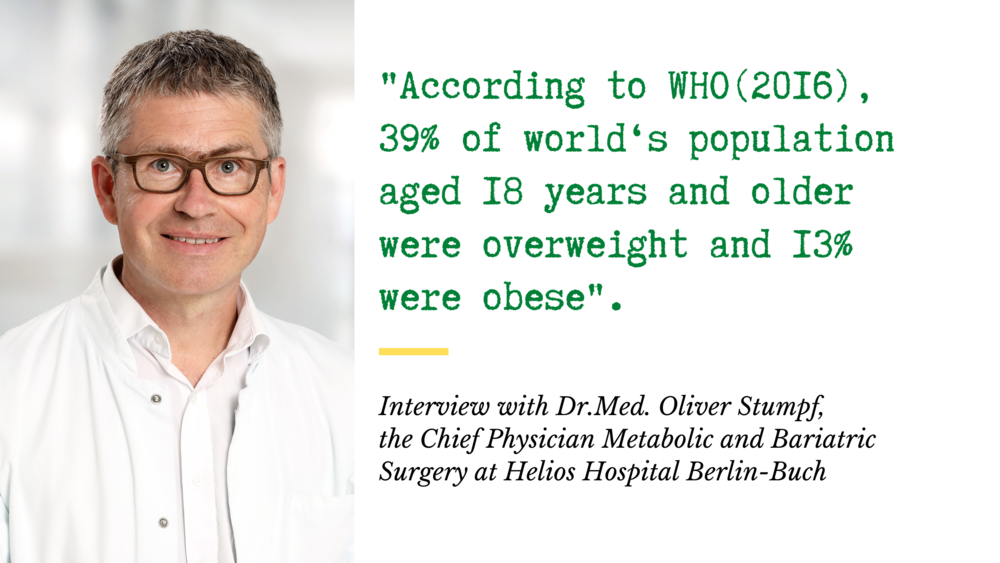
Types of bariatric surgery at Helios Hospitals
In cases of extreme obesity and secondary diseases, the best and most successful long-term treatment is a combination of conservative therapy and surgery. A patient is recommended to change the diet and life style, increase physical activity and follow the new routine for the whole life. Surgery is used only as an additional treatment and doesn’t substitute the conservative therapy.
Goals of bariatric surgery
The goal of bariatric surgery is restore energy balance. This can be achieved by the following measures:
- The reduction of the stomach size leads to a reduction in food intake restriction.
- Malabsorption is the reduced absorption of calories and fats by bypassing part of the small intestine.
- The surgical alteration of the digestive tract changes the hormonal digestion and satiety mechanisms.
Various surgical measures
The bariatric team works with the patient in order to find the right form of therapy. All surgeries are usually minimally invasive procedures, also called "keyhole surgery". This allows the patient to recover faster after the surgery.
Gastric banding
The stomach is divided with a silicone band into a small stomach pouch and a residual stomach. The opening between the two parts is narrowed, so that the food first fills the pouch and causes a faster feeling of fullness.
Sleeve gastrectomy
During sleeve gastrectomy, a large part of the stomach is removed. The remaining part is a tubular pouch, which connects the esophagus and the intestine. Now the patient can take only small portions. As a result patients lose 75-80 % of their weight.
Gastric bypass
Gastric bypass is a frequently performed surgical procedure. The reduction of the stomach is combined with a partial bypass of the small intestine. As a result, the patient consumed less food. According to the estimates, 80-85 % of overweight can be reduced. Gastric bypass is particularly promising in the treatment of type 2 diabetes.
Omega-Loop Bypass
The mini-gastric bypass, also known as omega-loop bypassis a relatively new procedure. During the surgery, the stomach is reduced in size and connected with a loop of small intestine. Advantage: Successful weight reduction and good treatment of type 2 diabetes.
Related stories:
Do you need more information about Helios Hospitals or want to schedule your treatment?






